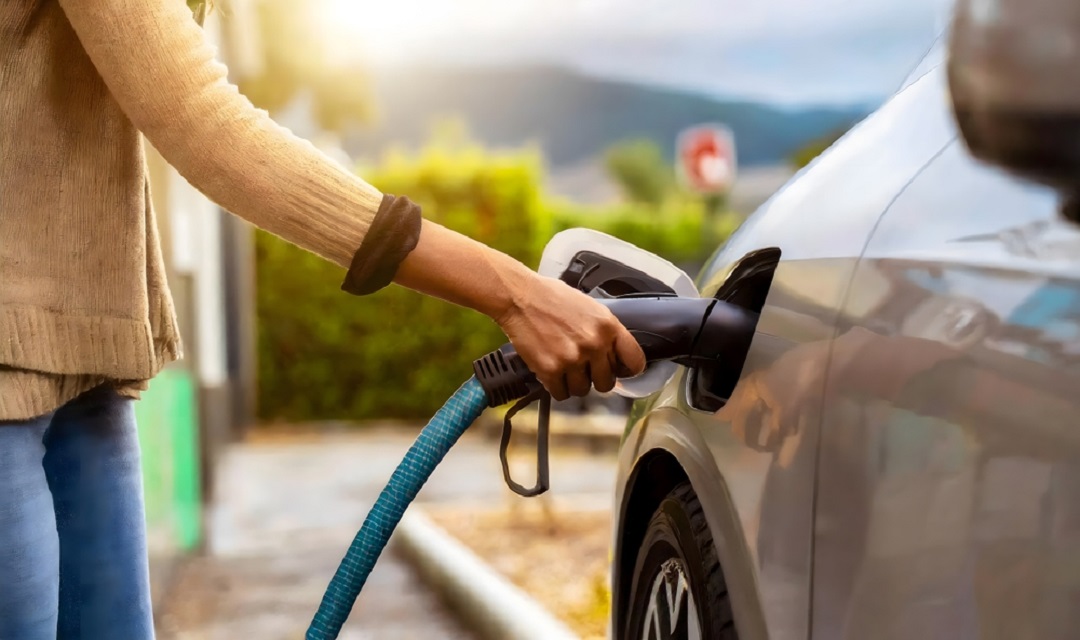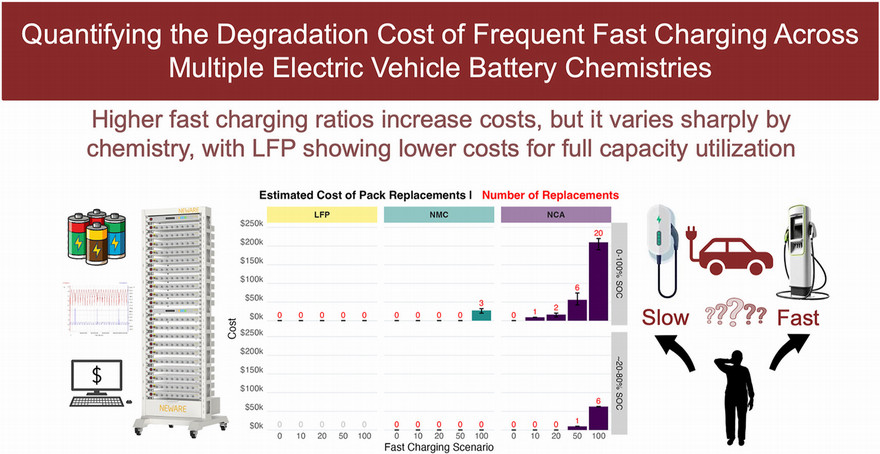Will fast charging your EV kill its battery?
Abby Verret
Jun 18, 2025

Electric vehicle drivers want to know whether fast charging a vehicle at a fast public charger will kill the battery. Researchers in the Carnegie Mellon University College of Engineering set out to find the answer.
Direct current (DC) fast chargers at public charging stations enable drivers to recharge electric vehicle (EV) batteries at significantly higher speeds. For some demographics, such as ride-share drivers and households that lack the infrastructure for at-home charging, the possibility of electric vehicle ownership hinges on the ability to recharge the battery quickly on a regular basis.
Yet, these fast-charging stations are only useful if the battery pack - an expensive component - can withstand the increased flow of power. The number of charging stations and the power of DC chargers have both increased in the past few years. As a result, the question of premature battery degradation resulting from fast charger use is a growing and significant concern among EV drivers.
EV adoption, fast charging availability, and charger power have all continued to increase since the researchers started this project in 2021, said Hannah Morin, lead author on the paper and a PhD student in the departments of engineering and public policy (EPP) and materials science and engineering (MSE).
“Fast charging is widely recognized to accelerate battery degradation in laboratory studies,” Morin said. “So it was an open question: as people are able to rely on a mix of fast and slow charging, what would that do to the battery?”
The answer, according to the study, is that it depends on what kind of lithium ion battery the vehicle has. The team tested three common electric vehicle battery types - LFP, NMC, and NCA - with different combinations of fast and slow charging.

Degradation levels of different electric vehicle battery chemistries across multiple fast charging scenarios.
The LFP batteries, which have the same cathode material as cells used in many new standard-range Teslas, showed essentially no increased degradation even under conditions of more than 90% fast charging. NMC batteries, which are used by most other electric vehicle manufacturers, maintained standard lifespans in most charging scenarios but did degrade more quickly under the greater than 90% fast charging condition. NCA batteries, which are used in long-range Teslas, were the most vulnerable of the three, and the degradation scaled exponentially with increased fast charging.
The findings suggest that LFP batteries, which are more likely to require fast charging due to a lower driving range, are thankfully less susceptible to increased degradation, noted Jeremy Michalek, a professor of EPP and mechanical engineering. Whereas the most vulnerable NCA batteries are primarily used in long-range vehicles, giving drivers more flexibility to wait until they can slow charge.
“Consumers don’t always know what kind of battery is in their car, so they might have to ask,” Michalek said. “It is worth thinking about the issue when pursuing a battery-powered vehicle.”
After learning about your vehicle’s battery type, there are steps you can take to mitigate the impact if you do have to fast charge, said Jay Whitacre, the Trustee Professor in Energy in EPP and MSE.
“From a consumer perspective, if I know I can fully fast-charge in 18 minutes, maybe I would go for 15 instead,” Whitacre said. “We found that if you did a fast charge, but not for the entire capacity of the battery, it was less degrading. Also, if you are in the market for a new vehicle and expect to be fast charging frequently, LFP may be the better choice.”
Consumers don’t always know what kind of battery is in their car, so they might have to ask. It is worth thinking about when pursuing an EV.
Jeremy Michalek, Professor, Engineering and Public Policy and Mechanical Engneering
Exact battery chemistries are largely proprietary, so vehicle manufacturers tend not to advertise them. Still, the researchers agreed, there is room for more transparency in the industry to help ensure consumers understand their batteries and how to maximize their lifespans.
Smart technology could be employed to help consumers maintain their batteries without revealing the exact chemistry to the public, Whitacre noted. Using studies like this one, manufacturers could program vehicles to offer drivers suggestions and warnings about their fast charging patterns.
“From a policy perspective, information on fast-charging history could be important for those buying used vehicles,” Morin said. “In our experiment we model the mileage the vehicle has traveled, and depending on the amount of fast charging the vehicle experienced, the mileage becomes less of an indication of its health. A high mileage vehicle that has not been fast charged as frequently can be healthier than a low mileage vehicle that has.”
The researchers also noted that this study focused on continuous currents as a proxy in order to establish an upper bound or worst case scenario, rather than simulating realistic driver profiles. They have since started working on follow-up research in order to provide answers that are more specific to realistic driving conditions.